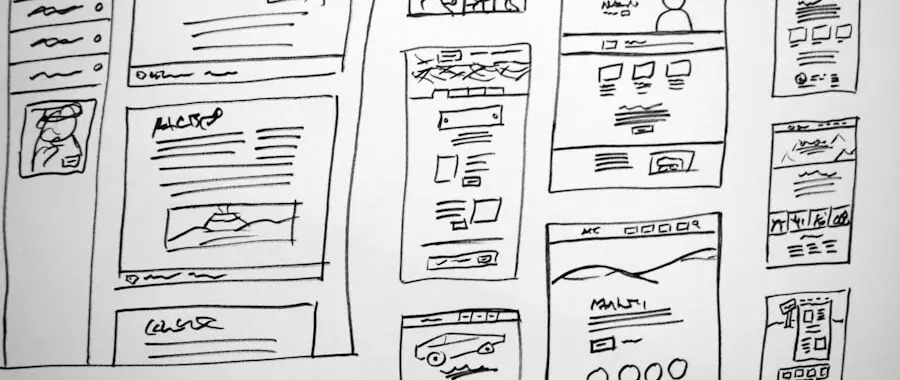
In today’s digital landscape, a professional website design is not just an option; it is a necessity. Your website serves as the virtual storefront for your business, and first impressions matter immensely. A well-designed website can captivate visitors, convey your brand’s message, and establish credibility.
Conversely, a poorly designed site can drive potential customers away, leading to lost opportunities and diminished trust in your brand. In essence, your website is often the first point of contact between you and your audience, making it crucial to invest in a design that reflects your values and engages users effectively. Moreover, a professional website design goes beyond aesthetics.
It encompasses functionality, usability, and accessibility. A site that is visually appealing but difficult to navigate will frustrate users and lead to high bounce rates. Therefore, a comprehensive approach to web design is essential, one that considers not only how the site looks but also how it performs.
By prioritizing professional design, businesses can create an online presence that not only attracts visitors but also converts them into loyal customers. Check out the latest innovations from sevenoways innovations.
Key Takeaways
- A professional website design is crucial for creating a positive first impression and building credibility for your business.
- Website design plays a key role in establishing your online presence and influencing how your target audience perceives your brand.
- When choosing a website design agency in Sligo, consider their experience, portfolio, and ability to understand your business goals.
- Key elements of effective website design include clear navigation, compelling visuals, and a responsive layout for different devices.
- Incorporating user experience (UX) and user interface (UI) design is essential for creating a seamless and enjoyable website browsing experience for visitors.
Understanding the Role of Website Design in Establishing Your Online Presence
Website design plays a pivotal role in establishing your online presence. It acts as the foundation upon which your digital identity is built. A well-structured website allows you to showcase your products or services effectively while communicating your brand’s story.
This narrative is crucial in differentiating yourself from competitors and creating a unique space in the digital marketplace. A thoughtfully designed website can help you articulate your mission, values, and offerings in a way that resonates with your target audience. Furthermore, the design of your website influences how users perceive your brand.
Consistency in branding elements such as colors, fonts, and imagery fosters recognition and trust. When users encounter a cohesive design across all platforms—be it social media, email marketing, or your website—they are more likely to develop a sense of familiarity with your brand. This familiarity can lead to increased engagement and loyalty over time.
In this way, effective website design is not merely about aesthetics; it is about creating a holistic experience that reinforces your brand identity.
Choosing the Right Website Design Agency in Sligo

Selecting the right website design agency is a critical step in achieving your digital marketing goals. In Sligo, where local businesses are increasingly recognizing the importance of a strong online presence, there are numerous agencies to choose from. However, not all agencies are created equal.
It is essential to conduct thorough research to find an agency that aligns with your vision and understands your industry. Look for agencies with a proven track record of successful projects and satisfied clients. When evaluating potential agencies, consider their portfolio and case studies.
A diverse portfolio showcasing various styles and functionalities can indicate versatility and creativity. Additionally, client testimonials can provide insight into the agency’s communication style, reliability, and ability to meet deadlines. It is also beneficial to have an initial consultation to discuss your goals and gauge how well the agency understands your needs.
By taking the time to choose the right partner, you can ensure that your website design project is in capable hands.
Key Elements of an Effective Website Design
| Key Elements | Metrics |
|---|---|
| Responsive Design | 85% of internet users expect a website to perform as well or better on their mobile device as it does on a desktop |
| Clear Navigation | 70% of users say they are more likely to stay on a website if it has an easy-to-use navigation menu |
| Visual Appeal | 38% of people will stop engaging with a website if the content/layout is unattractive |
| Fast Load Time | 47% of consumers expect a web page to load in 2 seconds or less |
| Quality Content | 60% of consumers feel more positive about a company after reading custom content on its site |
An effective website design incorporates several key elements that work together to create a seamless user experience. First and foremost is the layout; a clean and organized layout allows users to navigate the site intuitively. Clear headings, well-defined sections, and logical flow are essential for guiding visitors through your content.
Additionally, high-quality visuals—such as images and videos—can enhance engagement and convey information more effectively than text alone. Another critical element is content. Compelling and relevant content not only informs visitors but also encourages them to take action, whether that be making a purchase or signing up for a newsletter.
Furthermore, incorporating calls-to-action (CTAs) strategically throughout the site can guide users toward desired outcomes. Lastly, ensuring that your website loads quickly is vital; slow-loading pages can lead to frustration and increased bounce rates. By focusing on these key elements, you can create a website that not only looks great but also functions optimally.
Incorporating User Experience (UX) and User Interface (UI) Design
User Experience (UX) and User Interface (UI) design are integral components of effective website design. While UI focuses on the visual aspects of the site—such as buttons, icons, and layout—UX encompasses the overall experience users have while interacting with the site. A successful website must prioritize both elements to ensure that visitors have a positive experience from start to finish.
To enhance UX, it is essential to understand your target audience’s needs and preferences. Conducting user research can provide valuable insights into how visitors interact with your site and what they expect from it. This information can inform design decisions that improve usability, such as simplifying navigation or optimizing content placement.
On the other hand, UI design should focus on creating visually appealing elements that align with your brand identity while ensuring they are functional and easy to use. By harmonizing UX and UI design principles, you can create a website that not only attracts visitors but also keeps them engaged.
Mobile Responsiveness and Compatibility

In an era where mobile devices dominate internet usage, ensuring that your website is mobile-responsive is paramount. A mobile-responsive design adapts seamlessly to different screen sizes and orientations, providing an optimal viewing experience for users on smartphones and tablets. With more people accessing websites on their mobile devices than ever before, neglecting mobile compatibility can result in significant losses in traffic and conversions.
Moreover, search engines like Google prioritize mobile-friendly websites in their rankings. This means that if your site is not optimized for mobile use, it may struggle to appear in search results, limiting your visibility online. To achieve mobile responsiveness, consider using flexible grid layouts, scalable images, and CSS media queries that adjust styles based on device characteristics.
By prioritizing mobile compatibility in your website design, you can reach a broader audience and enhance user satisfaction.
Search Engine Optimization (SEO) and Website Design
Search Engine Optimization (SEO) is another critical aspect of website design that cannot be overlooked. A well-designed website should be built with SEO best practices in mind to improve its visibility on search engines like Google. This involves optimizing various elements of the site, including meta tags, headings, URLs, and image alt text.
By incorporating relevant keywords naturally into your content and ensuring proper formatting, you can enhance your site’s chances of ranking higher in search results. Additionally, the structure of your website plays a significant role in SEO performance. A clear hierarchy with organized navigation helps search engines crawl your site more effectively while providing users with an intuitive browsing experience.
Furthermore, incorporating internal links can guide visitors to related content while signaling to search engines the importance of various pages on your site. By integrating SEO strategies into your website design from the outset, you can create a strong foundation for attracting organic traffic.
Tracking and Analyzing Website Performance
Once your website is live, tracking and analyzing its performance becomes essential for ongoing success. Utilizing tools like Google Analytics allows you to gather valuable data on user behavior, traffic sources, conversion rates, and more. This information can provide insights into what aspects of your site are working well and which areas may need improvement.
Regularly reviewing performance metrics enables you to make data-driven decisions that enhance user experience and drive conversions. For instance, if you notice high bounce rates on specific pages, it may indicate that users are not finding what they expect or that the content needs refinement. Additionally, tracking conversion rates can help you assess the effectiveness of CTAs and overall site functionality.
By continuously monitoring performance and making necessary adjustments, you can ensure that your website remains an effective tool for achieving your digital marketing goals. In conclusion, investing in professional website design is crucial for establishing a strong online presence in today’s competitive digital landscape. By understanding the role of design in shaping user experiences and choosing the right agency for your needs—such as Sevenoways Innovations based in Sligo—you can create an effective platform that resonates with your audience while achieving your business objectives.
With careful attention to key elements like UX/UI design, mobile responsiveness, SEO integration, and performance tracking, you can build a website that not only attracts visitors but also converts them into loyal customers.










